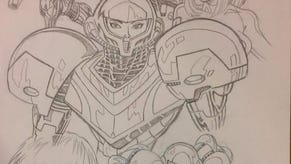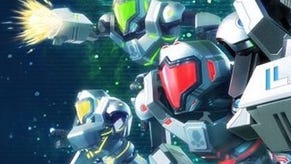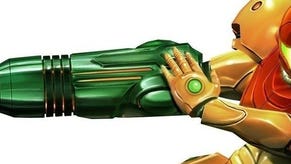Metroid Prime 3: Corruption
Not long now.
Never mind Super Mario Galaxy - the one forthcoming Wii first party title that has me frothing with giddy expectation is the latest in the Metroid Prime series. After the majestic beast that was 2004's Metroid Prime 2: Echoes, Retro Studios latest offering was always going to get the red carpet treatment from us - appropriate, given that Nintendo's swanky new offices are literally next door to the Queen's modest abode in Windsor.
Presented with a near-as-dammit finished build, we played through the first five per cent of the game, encompassing two bosses and a few of the early weapons and armour upgrades. First impressions? No great change or evolution in the gameplay or graphical stakes, but a significant overhaul in how you play the game - to the extent that it still ends up feeling fresh and interesting.
The premise for this one is, as the title suggests, corruption. The final part of the trilogy kicks off six months after Echoes, with the Galactic Federation’s network computers (the Aurora Units) all rendered useless thanks to a virus. Having managed to shut down the network quickly, some of the Aurora are still operational and give Samus a head-up on what the problem is. To cut to the chase, entire planets are being corrupted by something that's launching "enormous seeds" called Leviathans into them. That 'something' - although not spelled out in the portion of the game we played - is Samus' long-time nemesis, Dark Samus.
Keep it dark
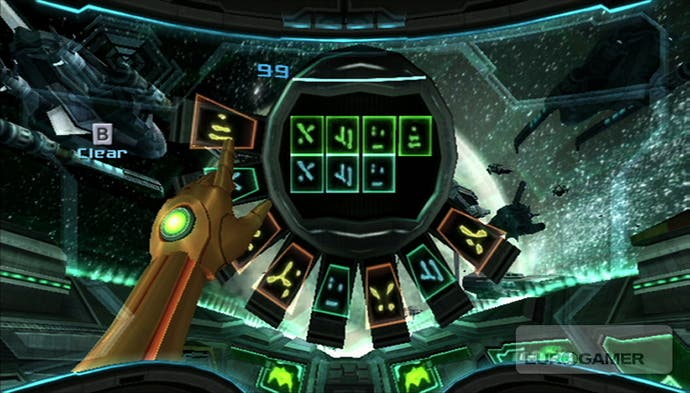
[small spoiler alert]Apparently Dark Samus defeats Samus and the other bounty hunters, and corrupts them all with 'Phazon' in the process - a corruption that the Galactic Federation uses to enhance the hunter's powers. These Phazon Enhancement Devices, allows Samus to go into a state known as the Hypermode. Now, although it promises to grant her super-powered weapons that are essential to take down the so-called 'Phazon impediments', it drains her health to use them - so, in effect, on a time-limited basis. Nevertheless, she now has the tools to take on Dark Samus..[end spoiler]
In the practical terms of the early part of the game we played, this corruption of the space station means that all sorts of essential operations are out of action, and it's up to Samus to go around and fix certain things before she can strike back. For example, at the start you must bring the power back online so that the planetary defence system can once again repel the Space Pirates busily making a nuisance of themselves - as usual. Over the course of this no-doubt-epic adventure you'll be travelling to multiple planets ("each with their own unique landscapes and dangers") to halt this ongoing corruption.
However, we didn't get that far into the game to enjoy these lovely new powers (we'll have to wait for the forthcoming review for that) - but we did get a good feel for the controls, duked it out with a few bosses and played tourist to the visuals to get a solid first impression of what to expect.
Controls first, then: as you'll no doubt already be aware via the various hands-on to emerge from the last two E3s, it's another first person title to employ the regulation 'point, aim and shoot' system, where the nunchuk's stick controls movement, and the Wii remote controls the camera and aiming. Although I'm not about to jump on the bandwagon of complainers, there are certain situations when it works perfectly, and others where you seem to end up in more of a muddle than you would under 'normal' circumstances. Let me explain.
Assault and buttery
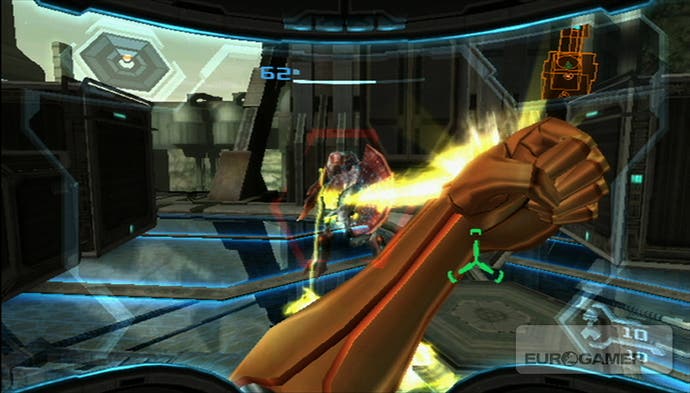
While wandering around the confines of the ship, scanning items, and picking off the odd space pirate, it feels great. It feels fluid, intuitive, responsive, precise. All the things you'd hope it would be, basically. The ability to lock-on, too, adds greatly to the sense of being in control, allowing you to strafe with ease, and get shots on target. Better still, more advanced difficulty levels force you to aim within the lock-on reticule in order to gain a hit, ensuring that skill is still a factor even when you're relying on the lock-on time and again.
Where it seems to feel less than satisfactory is when you're under huge pressure - such as during the boss encounters. As per usual, these tend to take place inside an arena-like environment where the giant enemy sits in the middle and gobs acid, white energy balls and electricity at you while you hot foot it around, strafing it in circles. The general idea is to repeatedly perform the dash move to keep out of the way, and then lock-on and target its weak spot for MASSIVE DAMAGE. Ahem. Dashing is fairly inelegant, though, as you end up bounding around, losing your lock-on and often looking the wrong way. Once that's happened to you, getting the reticule centred again costs you precious seconds, and you'll end up losing health in the process of wrestling with getting it all back on track. I'm probably making it sound like a bigger deal than it is, but the point is that there are moments when the controls hinder more than they help - but on balance the general degree of precision they offer more than offsets moments of clumsiness. Maybe over time we'll learn how to use it more effectively.


